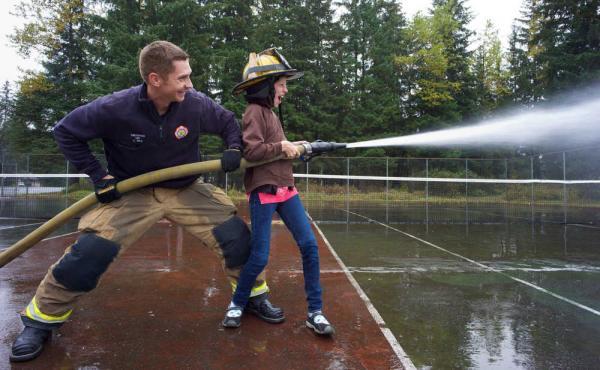Students in the Juneau School District won’t experience a new science curriculum for at least another year, but community members are already gathering to ask the question – What’s missing?
During a meeting Thursday at the Juneau-Douglas High School, more than 40 people gathered – some teachers, others university officials and some merely concerned community members – to brainstorm with district and city leaders about what an ideal K-12 science curriculum for the 2017-18 school year might look like.
Led by JSD director of teaching and learning support Ted Wilson, the open forum included small group discussions where people created lists to describe “an ideal STEM (science, technology, engineering and math) school” or “integrated learning environment.”
Juneau Economic Development Council STEM program manager Rebecca Soza helped guide the discussion, offering her expertise as a former middle school science instructor.
“A big thing we want to see with the curriculum is integrated learning, how those things (science, technology, engineering and math) can be taught together and learned together,” Soza said.
Ideas from the audience ranged from more class work done outside to getting rid of acronyms like STEM all together that confuse community members who might otherwise take an initiative to be part of this change.
Deborah Lo, University of Alaska Southeast School of Education dean, took part in the small group discussions and suggested the focus for STEM, sciences or whatever name it goes by, needs to begin with the educators.
“It starts with teachers who have to have strong content knowledge,” Lo said. “Without that there is no integration. You can’t teach something you don’t know well.”
Wilson said the meeting and discussion were only step one of a longer process and down the line, after a curriculum is developed by a not-yet-formed committee and approved, staff development will surely follow.
First more input from local leaders regarding available resources to improve the schools is needed, Wilson said. He called Thursday’s meeting a surprising show of support, with several Juneau Board of Education members and the UAS Chancellor Rick Caulfield in attendance, but more is still needed.
To gather more input from educators and business leaders in the science field, the district site will have surveys sometime in mid-January after Wilson and Soza assess from community feedback what is deemed missing in the schools.
Surveys for teachers include questions about preparedness for teaching science and time allotted each day for the subject. Community leaders will be asked about barriers to providing resources and untapped opportunities.
“Changes in the district will only work if there is a strong group of people behind it,” Soza said, adding that right now all the resources might not be in place, but a “grass roots” effort, like the one seen in Thursday’s community meeting, is a place to start.
The next planned community-wide curriculum discussion is set for Feb. 16. For more information, or to contribute to the science curriculum development with ideas on community involvement or teacher development, contact Wilson at 523-1723 or ted.wilson@juneauschools.org.
• Contact reporter Paula Ann Solis at 523-2272 or at paula.solis@juneauempire.com.

